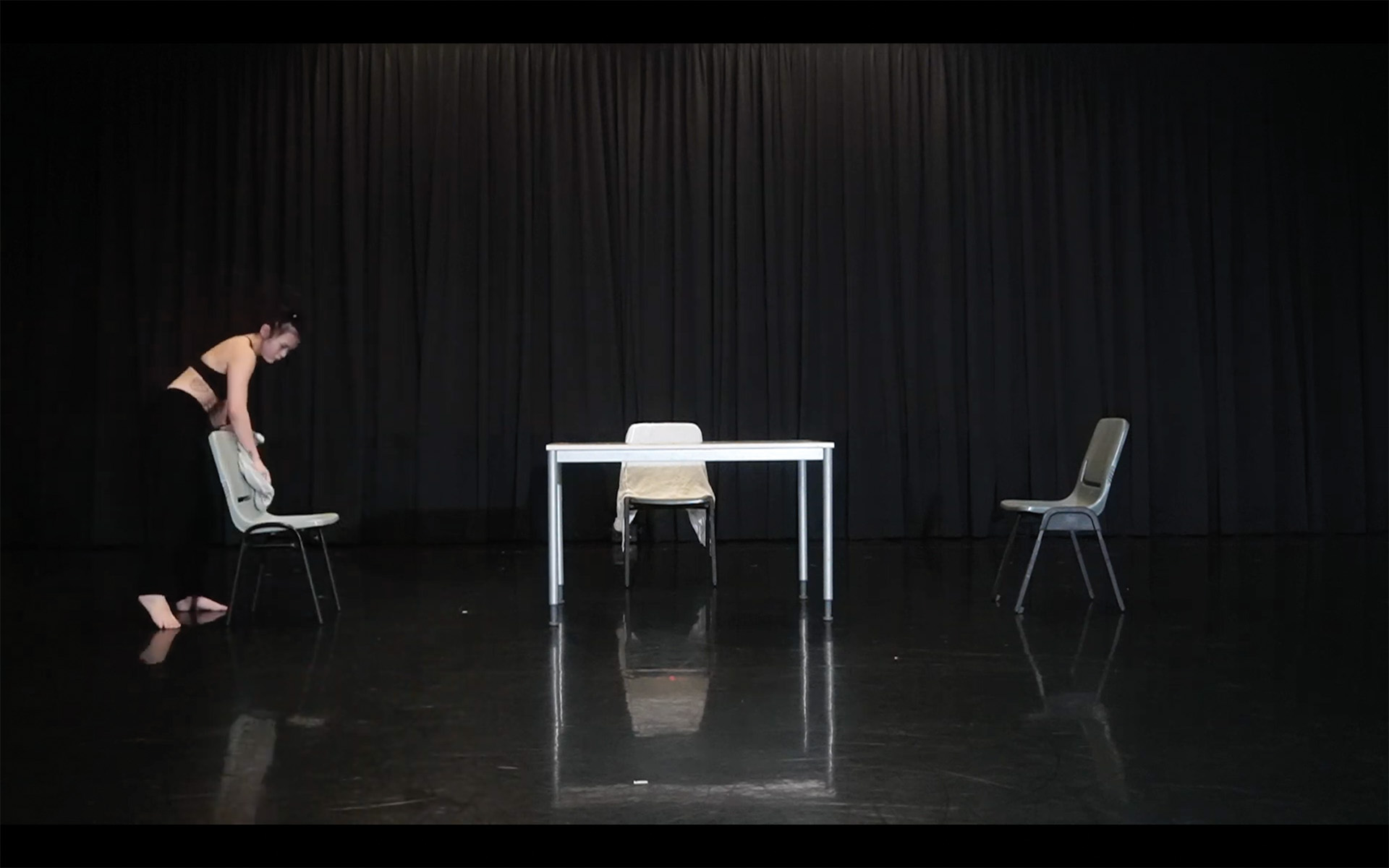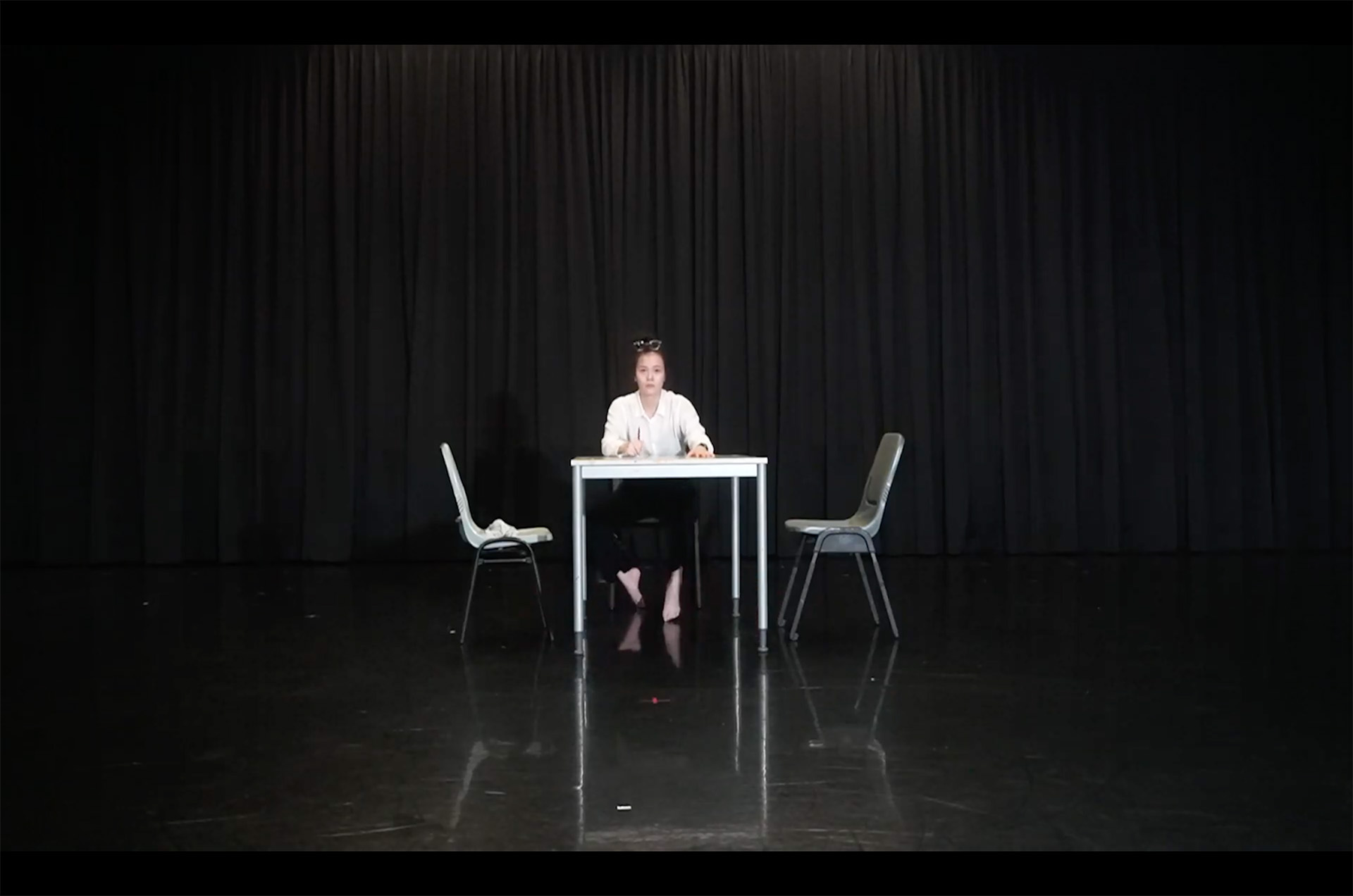In times of COVID-19, where almost everything is done virtually due to lockdowns and safety concerns, the topic of distance feels clinical yet familiar as we casually adapted into the ‘new normal’ as the next phase of life. As we adapt to travel bans, lockdowns and social distancing measures, awareness of physical distance from one to another becomes second nature and connection is expressed intangibly as we distance ourselves to prevent the greater spread of COVID-19.
Distance is usually quantified through a numerical measurement. But for Spanning Distances the student choreographers interpreted distance as suppression, space and intimacy.
My initial interpretation was to explore distance as the social disparity in relation to the expectation of and compensation given to males and females.
This inspired me to shed light on the demands of a typical female in conventional society through my choreography. In the domestic sphere, females cook, clean, wash and parent their children. For example, with the common consensus of females being the main caregivers of their children, they are likely faced with the option to give up their career to be a full-time mother, or to balance both. Women also face a higher chance of retrenchment during pregnancy, hence the Singapore Government set a law to protect their careers.
In the corporate world, females are vulnerable to male-dominated environments and masculine stereotypes.Government paid paternity leave entitles fathers to two weeks of leave while mothers get 16 weeks.1 The difference in parental leave also creates a gap between the two genders as males are awarded a shorter period of caretaking responsibilities. Both males and females get 24-hours a day, yet there seem to be endless tasks for females to complete within the ticking time. These tasks are performed daily and concurrently, often to the detriment of their mental and physical health.
With these differences listed, I segmented my dance choreography into two scenes: “motherhood” and the “work-life” of a female. In the first scene, I tried to portray motherhood by the acts of doing daily chores, such as cleaning, cooking, washing and wiping according to the slow metronome beats. The daily tasks are then juggled at a shorter frame of time, switching from one to another, showing the act of multi-tasking and the unfinished daily tasks of a mother. Overlapping the metronome beats, a soundscape of children screaming and playing is heard. This background noise adds a contrast to the mundane and repetitive tasks of motherhood, where children are the centre of a mother’s attention. It also shows audio multi-tasking as mothers have to be alert to their children even when they are busy with their chores.

Fig. 1 The home setting.
Screenshot from Spanning Distances, 2021
Photo: Luke Lim

Fig. 2 Multi-tasking. The upper and lower body performing different acts in
accordance with the metronome.
Screenshot from Spanning Distances, 2021
Photo: Luke Lim
As I shifted the table vertically to face the audience, the table represents a conference room to portray the “working life.” The added element for the choreography was my gaze. I change the direction of my gaze from flustered and downward-looking to an intense stare forward between the two scenes. Putting on a shirt while shifting the table and chairs signal the unfinished chores at home, before going to work. Females face backlash on their assertiveness at work. This has denied them leadership emergence, pay raises and advancements as it goes against feminine stereotypes. Males are statistically paid more for the same job, resulting in a large pay discrepancy between males and females.2 Elise states that for every dollar males were paid, females were only paid 80 cents. Under the table, the feet act in a flustered and jittery manner, showing the chaos of trying to keep up and fight against the discrimination females face. However, the upper half shows a calm, composed and assertive demeanour—a facade.

Fig. 3 The corporate setting.
Screenshot from Spanning Distances, 2021
Photo: Luke Lim
Due to safety measures, the presentation of the dances switched from a live performance to a recorded dance to be presented online. I found the themes of distance, fulfilling expectations, self-censorship and multi-tasking were heightened in the process. Yes, Spanning Distances has allowed us to share our work through tough times, but it has also challenged us to work with the camera and to achieve our intentions even after being mediated by the camera and with the added distance of a virtual wall. The process has also enabled us to experience our choreography through a different lens, outside our bodies and through someone else’s eyes.
I also connect it to the idea of multitasking as I constantly have to adapt and switch to different cues. According to the research by BMC Psychology,3 the majority of people proclaim that females are better at multitasking than males but that is false. In general, females in a conventional society are just more involved in multitasking than males. The expectations placed on females in these societies force a female to juggle motherhood and work in order to achieve a similar work-life balance to that of her male counterpart. So, in my choreography, certain instances were actually improvised to react to a situation. This is seen in my choreography when I am on top of the table and juggling the daily objects I have chosen and kept in my pockets. I cannot truly predict when my items will fall, where they will land or which item is picked when I ransack my pockets to find them. The unpredictability of these instances result in my having to multitask as I have to remember how to frame myself in the film and my true intentions despite whatever is happening.
In a recording, spatial awareness is very important. I have to constantly change and adapt to the different angles of the camera so I can stay in the frame. As opposed to performing live I have the whole stage to myself, with only the camera crew and cameras as the audience. Instead of the immediacy of live performance I get to do different takes and after each take I observe my recorded movements. This allows me to improvise and add to the choreography. The video also allows for different framing and lighting that could change the audiences’ perspective such as a low angle shot, a close-up, or a facial shot. These edits alter the choices and ways of looking that are available in a live performance and affect how people react to the choreography. However, I feel that the opportunity for multiple takes during the session made my choreography less organic at certain points as I am more aware of whether I am making a mistake or when I did not perform the way that I wanted to. These instances led to mini jerks or facial changes that could have changed the interpretations of my work. Working on the theme of multi-tasking became more real as I was juggling to keep my choreography raw but also rehearsing toremove hiccups in between. Perhaps the constant checking and judging myself added to understanding the role I was exploring.
Everyone has different interpretations of distance, and Dichotomy is my way of showing and performing my thought process behind the few disparities I have identified—namely gender, social, and financial disparity. Distance is also projected through the opportunity to film my choreography and have it presented online.


